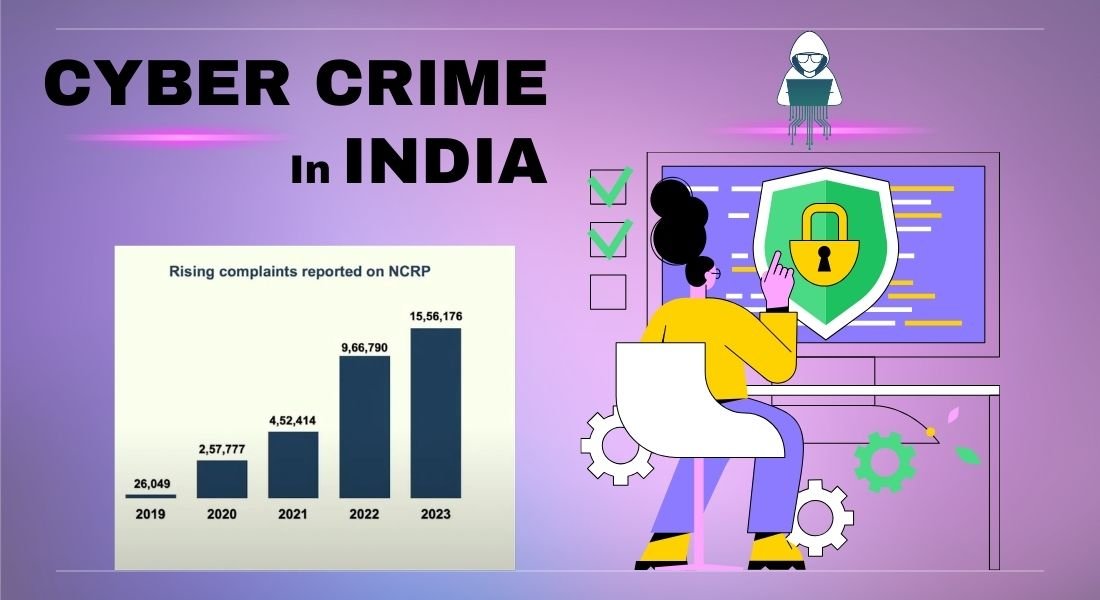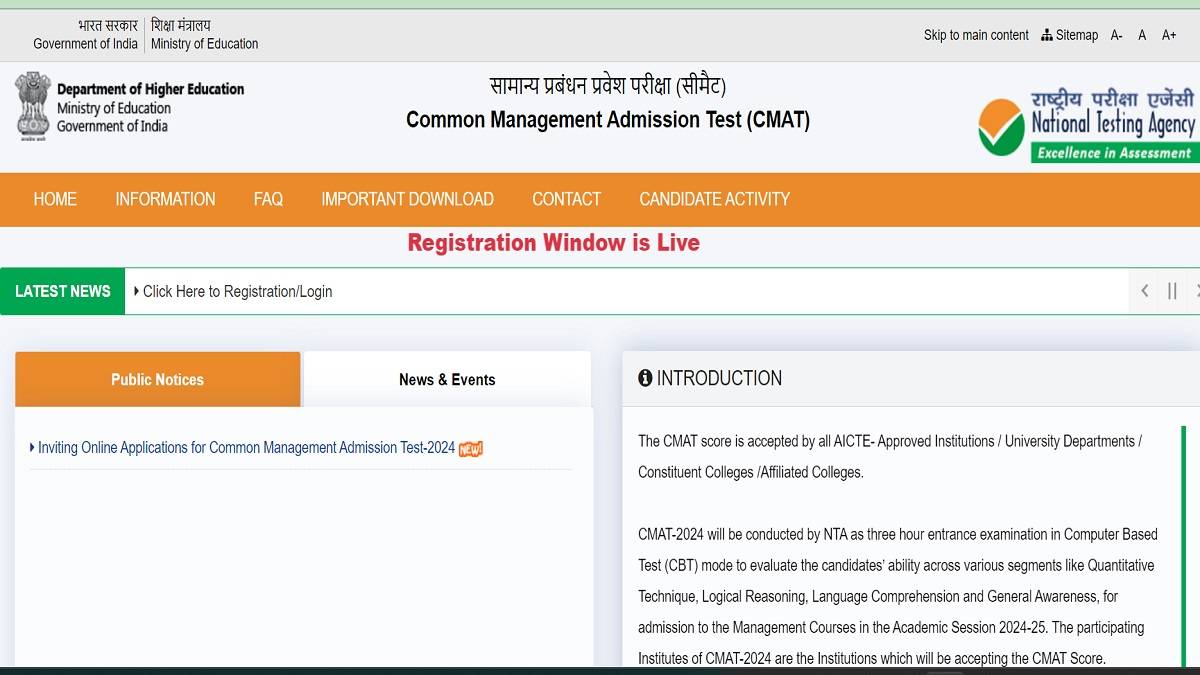“Cybercrime is not just a technological problem; it’s a societal one.”
India is home to around 800 million internet users and ranks among the world’s most digitally connected countries. This makes India attractive for cybercriminals. Nowadays government departments and businesses are increasingly relying on digital technology. To provide things such as education, finance, healthcare, and other government services to the peoples
The rapidly increasing internet penetration has also given rise to a huge increase in cyber attacks, from phishing to hacking of data houses. As more commerce and applications move online every day, the potential for cybercrime becomes even greater.
Cyber Crime
Cybercrime is a crime that happens on the internet. It can be anything bad from spreading bad news about someone, stealing money, or stealing someone’s confidential information through the internet.
Cybercrime in India Helpline Number
The Cybercrime in India Helpline Number is 1930.
Also Read: How to Fight Phone Addiction
Types Of Cybercrime In India
| Type of Cybercrime | Details |
| Phishing | A fake email claiming to be from a bank asking for your account details. |
| Malware | A virus that steals your credit card information |
| Identity Theft | Using someone’s Social Security number to open a new credit card. |
| Cyberbullying | Posting mean comments about someone online. |
| Online Fraud | A fake online store that sells products that don’t exist. |
| Hacking | Breaking into a company’s computer system to steal customer data. |
| Data Breaches | A company’s database of customer information is hacked and leaked online. |
| Child Exploitation | Creating and distributing child pornography. |
| Child Pornography/CSAM | Distribution of explicit images of children |
| Cyber Stalking | Using electronic communication to follow or harass someone. |
| Cyber Grooming | Building an online relationship with a minor for sexual purposes. |
| Online Job Fraud | Promising high-paying jobs that don’t exist. |
| Online Sextortion | Threatening to release explicit images unless someone sends money or performs sexual acts. |
| Vishing | Pretending to be a bank representative to obtain account details. |
| Smishing | Sending a message claiming to be from a bank or government agency. |
| SIM Swap Scam | Obtaining a new SIM card for someone’s registered number to gain access to their accounts. |
| Impersonation and Identity Theft | Creating a fake profile using someone’s personal information. |
| Spamming | Sending mass emails or text messages advertising products or services. |
| Viruses, Worms, and Trojans | Infecting a computer with a virus that deletes files. |
| Denial of Services (DoS) Attack | Overwhelming a computer system with traffic to make it inaccessible. |
| Website Defacement | Replacing the content of a website with offensive or malicious material. |
| Cyber-Squatting | Registering a domain name similar to a well-known brand. |
| Pharming | Redirecting a website’s traffic to a fake website. |
| Cryptojacking | Using someone’s computer to mine cryptocurrency without their knowledge. |
| Online Drug Trafficking | Selling or distributing drugs over the internet. |
| Espionage | Obtaining information illegally. |
Also Read: Online Vs Offline Shopping
Cybercrime in India Stats
There have been several reports which claim that India is among the world’s most hacked countries.
- Expected to result in $10.5 trillion per year by 2025 The global annual cost, meanwhile, was estimated in 2023 to be $8 trillion.
- In 2022, the FBI reported receiving some 800,944 complaints affecting at least an estimated minimum of over a quarter billion consumers. This is equivalent to an average of 97 victims per hour.
- There would have been an estimated total of 33 billion accounts breached in 2023, with a daily average of breaches at about 2,328.
Ransomware and Phishing
- In 2023, Ransomware attacks were the most worrying with some organizations that suffer from 72.7% of ransomware victims It is assumed that the costs of ransomware will achieve 265 $ billion every single season by this year.
- Phishing attacks represent 80% of all reported cybercriminal activities, making them the number-one type of threat. They are also tied with healthcare as the most expensive, clocking in an average of $4.91 million per breach.
Regional Insights
- The average cost of cybercrime for businesses in the U.S. is about $27.37 million U.S. residents lost $6.9 billion last year to cyber-enabled crimes, including losses through such scams as romance and investment frauds, according to the FBI’s 2021 Internet Crime Report released.
- 50% of UK businesses impacted by a cyber attack 2023 Businesses paid up to an aggregate of £4,200 per data breach on average in 2022 reinforcements
Also Read: Online Vs Offline Learning
Trends and Future Projections
The COVID-19 pandemic led to expanded cybercrime by sixfold. This method has previously been used in “less targeted spam attacks” and due to the global shift towards workplaces working remotely, companies are leaving themselves open for a new style of attack.
Cryptocurrency crime to exceed $30 billion per year by 2025, predicts cybersecurity ventures. We also know that the number of reported vulnerabilities is going up, with a 25% year-over-year increase seen in the U.S. government’s National Vulnerability Database between 2021 to 2022
Also Read: Creativity vs Knowledge – Which Is Better?
Cybercrime Laws in India
| Law | Details |
| Information Technology Act, 2000 (IT Act) | India’s primary cyber law. Recognizes electronic transactions, accepts e-filings and human cybercrime is punishable increasing from hacking to identity theft and fraud. Amendments to the Act have been made and cyber-security strengthens implemented as well, with penalties for damage caused by a rise in the amount of harm through cyber attacks. |
| Digital Personal Data Protection Act, 2023 (DPDPA) | The law is concerned with personal data and the privacy of individuals. It sets rules on data processing, consent, and the rights of persons involving |
Also Read: Co-Education- Pros and Cons
Cybercrime in India IT Act: Sections and Penalties
| Section | Offense | Punishment |
| Section 65 | Tampering with Computer Source Documents | 3 years imprisonment or fine up to 2 lakhs INR, or both |
| Section 66 | Using the password of another person | 3 years imprisonment or fine up to 1 lakh INR, or both |
| Section 66D | Cheating Using Computer Resources | 3 years imprisonment or fine up to 1 lakh INR, or both |
| Section 66E | Publishing Private Images of Others | 3 years imprisonment or fine up to 2 lakhs INR, or both |
| Section 66F | Acts of Cyber Terrorism | Life imprisonment |
| Section 67 | Publishing Child Porn or predating children online | 7 years imprisonment or fine up to 10 lakhs INR, or both |
| Section 69 | Govt.’s Power to block websites | Subject to compliance with the procedure |
| Section 43A | Data protection at the Corporate level | Liability to pay damages for wrongful loss or gain caused by negligence in implementing security practices |
Also Read: Peer Pressure— Pros and Cons
How do you file a cybercrime complaint online in India?
Identify Source:
- National Cybercrime Reporting Portal (NCRP): It is a centralized portal for reporting cybercrimes in India. FIE A COMPLAIN(https://cybercrime.gov.in/)
- State-Specific Cybercrime Reporting Portals: Some states have their own specific reporting channels. You are able to find your state portal online.
- The Crime In Your Local Area: If the crime is serious or urgent you can report it to your local police station.
Collect basic data: While making a complaint collect this information.
- Details of the incident
- Evidence
- Victim’s information
- Perpetrator’s information:
Complete the complaint form: The online complainant will ask you for details of the incident, about your information, and if you have any evidence. Give information that is factual and complete.
File the complaint: Fill out and file electronically. Or a complaint number or acknowledgment which will help you in the future.
Follow-up – If you also need to follow up after making the complaint, with the investigating authority regarding your case.
Also Read: Pros and Cons of E-Commerce for Businesses
Cybercrime Techniques and Tactics
| Technique | Description | Example |
| Malware | Malicious software designed to harm computer systems. | Viruses, worms, trojans, spyware, ransomware |
| Viruses | Self-replicating software that attaches to other programs. | A virus that spreads through email attachments and corrupts files. |
| Worms | Self-replicating software that spreads independently of other programs. | A worm that replicates itself across a network and consumes system resources. |
| Trojans | Malicious software disguised as legitimate software. | A trojan horse that downloads malware onto a system when executed. |
| Spyware | Software that secretly monitors and collects user data. | Spyware that tracks a user’s online activity and sends information to a third party. |
| Ransomware | Malware that encrypts files and demands a ransom for decryption. | Ransomware that locks a user’s files and demands a payment in cryptocurrency. |
| Social Engineering | Manipulating people to gain unauthorized access or information. | Phishing, spear phishing, tailgating, pretexting |
| Phishing | Sending fraudulent emails or messages to trick people into revealing personal information. | A phishing email pretending to be from a bank, asking for account details. |
| Spear Phishing | Targeted phishing attacks are aimed at specific individuals or organizations. | A spear-phishing email sent to a company’s CEO, pretending to be from a business associate. |
| Tailgating | Following someone into a restricted area without authorization. | Entering a building by following someone who holds a door open. |
| Pretexting | Creating a false scenario to gain trust and obtain information. | Pretending to be a customer service representative to get someone’s account details. |
| Hacking | Gaining unauthorized access to a computer system or network. | Password cracking, SQL injection, buffer overflow, cross-site scripting, man-in-the-middle attacks |
| Password Cracking | Trying different combinations of characters to guess a password. | Using a password cracking tool to brute force a password. |
| SQL Injection | Injecting malicious code into a website to access or manipulate data. | Inserting malicious SQL code into a website’s search bar to retrieve sensitive information. |
| Buffer Overflow | Exploiting a programming error to execute malicious code. | Overloading a program’s memory buffer to execute unauthorized instructions. |
| Cross-Site Scripting (XSS) | Injecting malicious scripts into a website to steal data or hijack user sessions. | Injecting JavaScript code into a website to steal cookies or redirect users to malicious websites. |
| Man-in-the-Middle Attacks | Intercepting communication between two parties to eavesdrop or manipulate data. | Intercepting network traffic to steal login credentials or credit card information. |
| Botnets | Networks of compromised computers controlled by a malicious actor. | Creating a botnet using malware to send spam or launch DDoS attacks. |
| Botnet Attacks | Using a botnet to perform malicious activities. | Launching a distributed denial of service (DDoS) attack to overwhelm a target’s servers. |
Also Read: Unemployment Rate in India 2024




